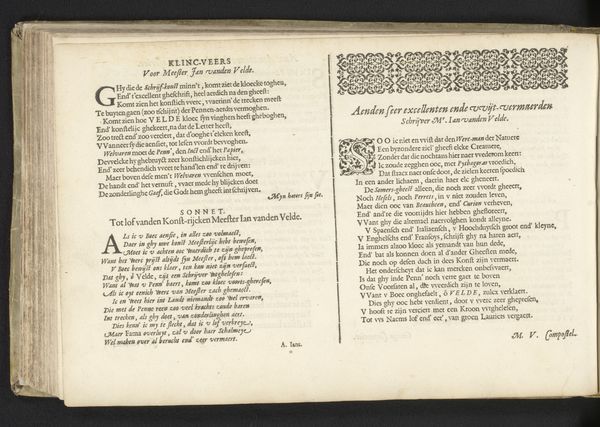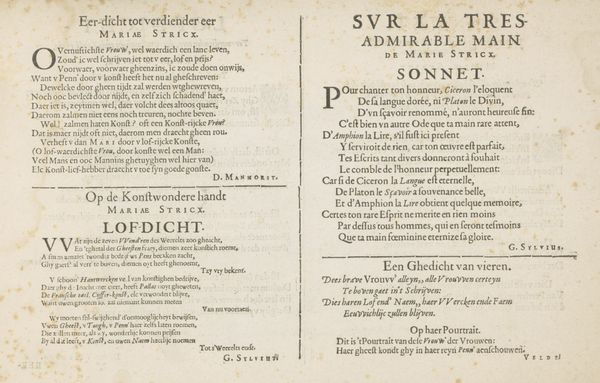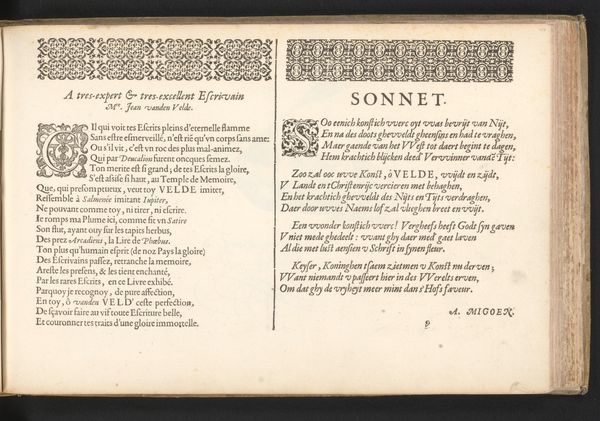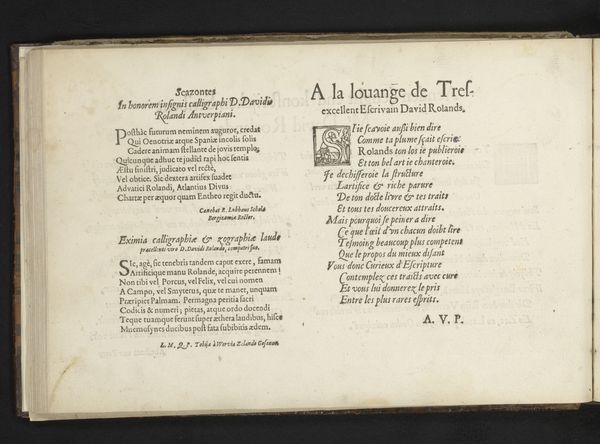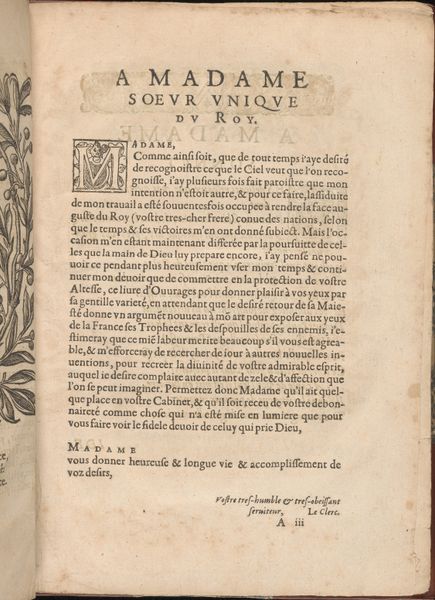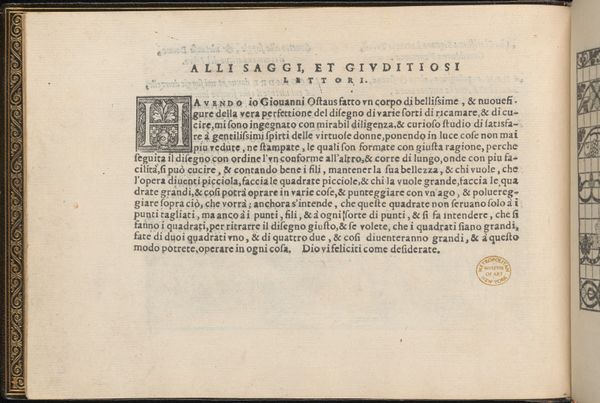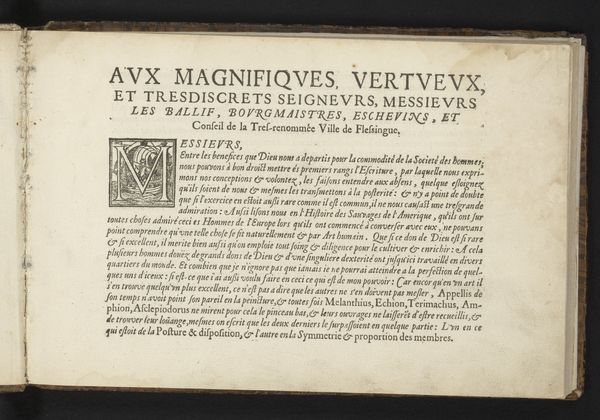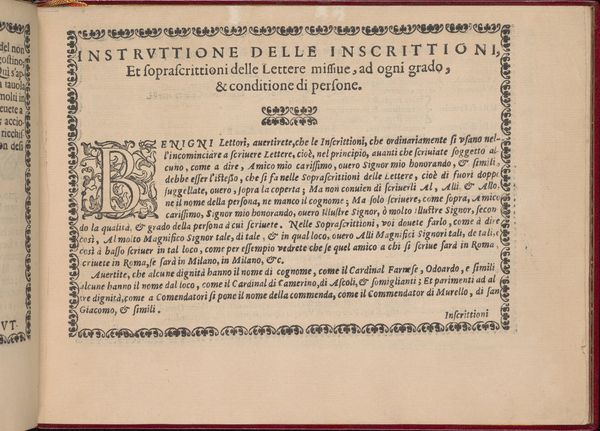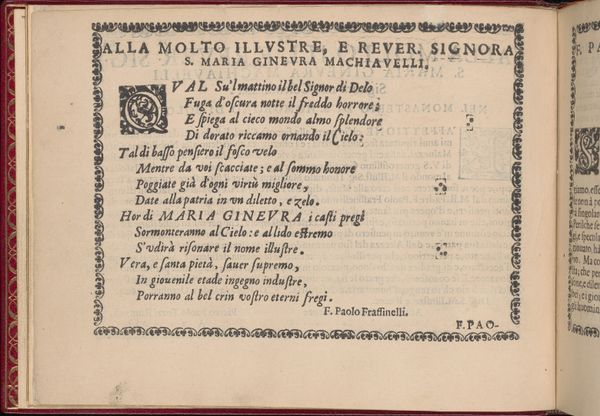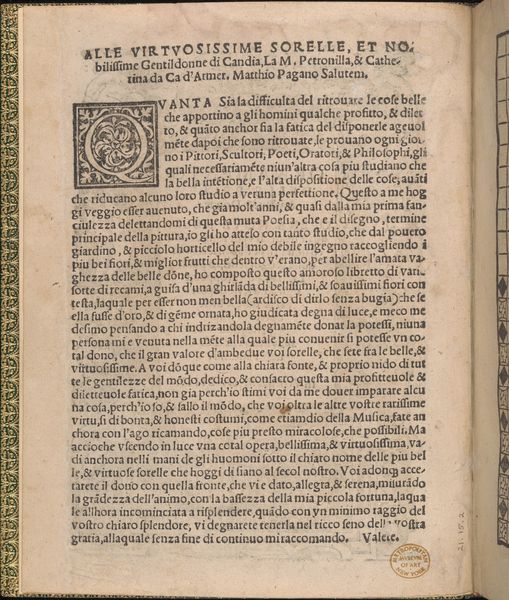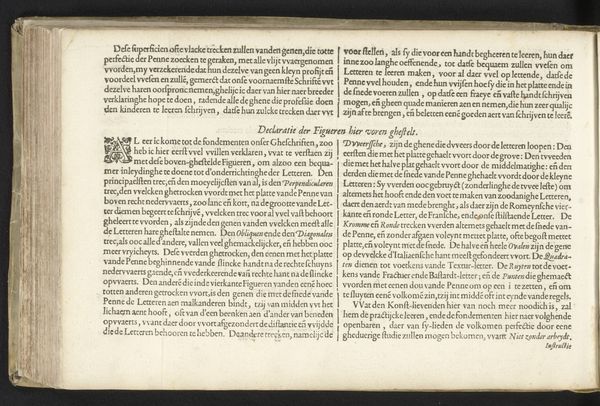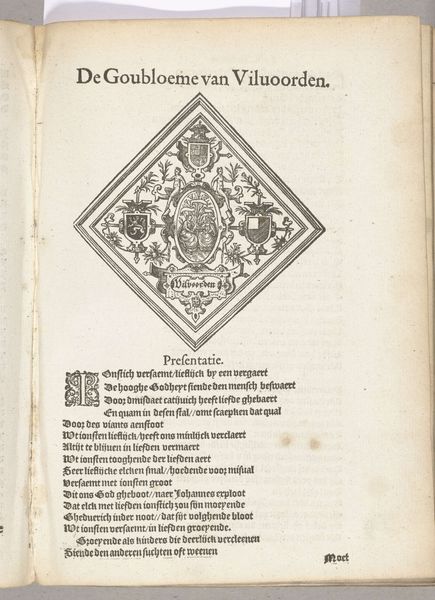
print, paper, typography, engraving
#
parchment
# print
#
paper
#
11_renaissance
#
typography
#
engraving
#
historical font
Dimensions: height 210 mm, width 315 mm
Copyright: Rijks Museum: Open Domain
Curator: Right, let’s dive into these "Twee Latijnse drempeldichten," or "Two Latin Threshold Poems," from 1605, by Jacob Lasson. We're looking at a print, so engraving on paper, with some typography elements. Editor: It’s striking how much text is packed onto these two pages, and I'm immediately drawn to the decorative initial letters, like illuminated manuscripts. What do you see in this piece beyond just the beautiful lettering? Curator: I see a cultural moment grappling with humanism and the revival of classical learning. Look at the Latin! These aren't just poems, they're tributes, positioned at the "threshold" as the title suggests—between different worlds of knowledge. Note how typography imitates calligraphy. What does this signify? Editor: Well, it almost feels like a democratizing force—making elegant script accessible. But isn't Latin, then and now, quite exclusive? Curator: Exactly. And that tension – the attempt to disseminate knowledge alongside inherent limitations of language and literacy – is crucial. Latin was the language of power, intellect and law, even during the early modern period. By using this language to praise the art of writing and print, these poems claim importance for both the handwritten and the mechanically reproduced. Editor: That's fascinating! So, it’s less about pure artistry and more about the social and political implications of language, accessibility, and who gets to participate. Curator: Precisely. Lasson isn't just showcasing calligraphy; he's engaging in a debate about the nature of knowledge, who controls it, and how it's disseminated. Consider too that this publication occurs just after the rise of printed books across Europe! Editor: It really changes how I see it – it's not just pretty writing, but a commentary on knowledge, class, and access at a really pivotal time! Thank you. Curator: Of course! Exploring how these works speak to those power dynamics is what makes art history so relevant, even centuries later.
Comments
No comments
Be the first to comment and join the conversation on the ultimate creative platform.
